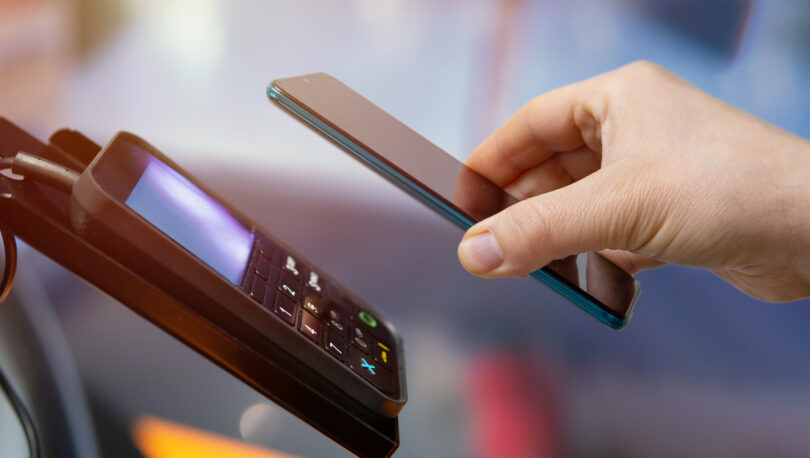Despite uncertainty surrounding consumer sentiment, businesses are continuing to update or entirely refresh their existing point-of-sale (POS) systems. Shifts in regular operations and consumer behavior also mean that many are looking at the advantages of mobile POS (mPOS) as well, particularly those attracted to the potential synergies with other systems like inventory management. The adaptability and versatility of many of these systems is one reason why the mPOS market is projected to hit $70B by 2027. Another? The onward march towards a digital, cashless global economy. But there is a downside –POS system prices are on the rise.
Pricing for virtually all types of IT hardware is increasing noticeably thanks to inflationary and supply chain pressures. The POS/mPOS market is no exception. Vendors are seeking creative ways to protect margin as their hardware costs spike. One example is padding pricing for different services and software tied to POS purchases. These are popular areas for OEMs/channel partners to hide pricing that’s materially above fair market range.
Here are a few tips to help you negotiate a better POS system price and eliminate overspending risk.
Outline and Understand Necessary Services – Implementation, Training, Extended Support, and Future Upgrades
NPI finds that even in engagements where the actual hardware/software pricing is within fair market ranges, vendors and channel partners often hide above-market rates in a variety of associated service fees for implementation, training, and similar services. This is especially true for POS system prices. So, while it’s crucially important to benchmark costs of the different POS/mPOS hardware pieces, it’s equally (if not more) important to keep benchmark the associated services being paid for to support the whole effort.
Preventative maintenance considerations are important in many POS setups as they can help avoid larger issues down the line. But some vendors will look to price gouge to add to margins. Similarly, major updates to systems or additions of new features can quickly turn into expensive SOWs that may include far more than what’s actually needed.
Weigh Importance of Upgrades and Different Features/Formats
New technologies like NFC and EMV chips are helping to drive many POS upgrades. Mobile can require a complete and potentially expensive change to current systems. Integrating a mPOS system that can also be used for inventory management can be a huge benefit, but also add to software costs.
With a potential move to mPOS, there may still be use cases to implement for customers that want to pay in cash. It’s also important to think about how full system changes or smaller upgrades may impact necessary training. Pricing for training and other services can add up quickly.
POS systems are increasingly being tied to time/attendance and other parts of the operational infrastructure. Leveraging these ties in your purchases can yield significant savings and also eliminate any redundant or duplicate software licenses.
Features don’t have to only be about visible UIs or fancy form factors either. Newer power supply units (PSU) can also help with savings on electricity as new models have adopted higher efficiency standards. But the cost of any such upgrades still needs to be validated even if better future power costs can be expected. Vendors will frequently over emphasize such benefits to sell at higher prices.
It’s a good idea to develop good hygiene now for how you evaluate the benefits and TCO of new features as well as how you validate fair market pricing. The rigor you invest in today will be tested in the coming years when trends like biometrics and advanced consumer profiling become mainstream and new waves of spend are unleashed.
Look at Staggering Store Deployments and Checking Incentives for ‘Bulk’ Orders
Many businesses may be pushed by vendors and even internal stakeholders to rush purchases and to deploy quicker than they can internally handle. At the same time, vendor-side sales teams aren’t just focused on selling new POS solutions – they’re also tasked with maximizing the volume of SKUs in each purchase.
Proper positioning and messaging of these buying schedules, particularly in cases where pricing is above fair market, can be the difference between an average and “best in class” deal. If you have a larger purchase on the horizon, NPI recommends modeling a few different buying schedules around different volumes to best explore and qualify incentives.
Is Your POS System Price Within Fair Market Range?
This one should be a no-brainer as it’s one of the easiest ways to materially save on POS system purchases. Given the disruptive state of the market, IT price benchmark analysis should be performed on every POS/mPOS purchase. Carefully aligned negotiation messaging will also go a long way in delivering significant savings.
If you have a POS purchase in this calendar year, NPI can help. Our IT price benchmark analysis and vendor-specific negotiation intel services can ensure you pay the lowest possible price for your refresh or upgrade. Contact us to learn more.
RELATED CONTENT
- Blog: How to Keep AI Pricing and Costs in Check
- Blog: Inflation Hitting PC Costs, But Effects on Enterprise Pricing Are Limited
- Bulletin: 10 Reasons Why IT Buyers Should Perform Price Benchmark Analysis
- NPI Service: IT Price Benchmark Analysis & Contract Negotiation Intel
